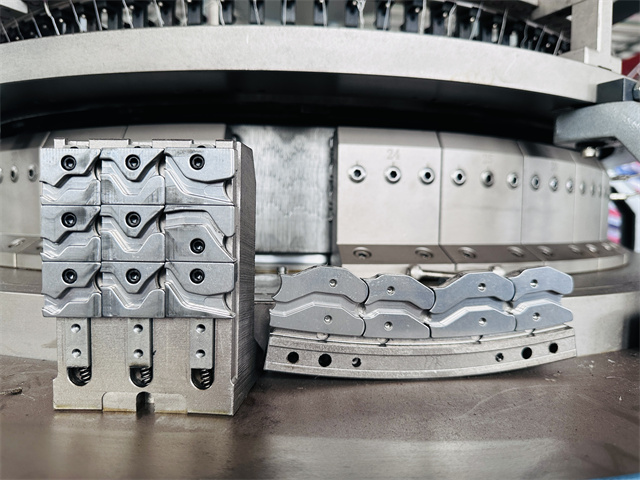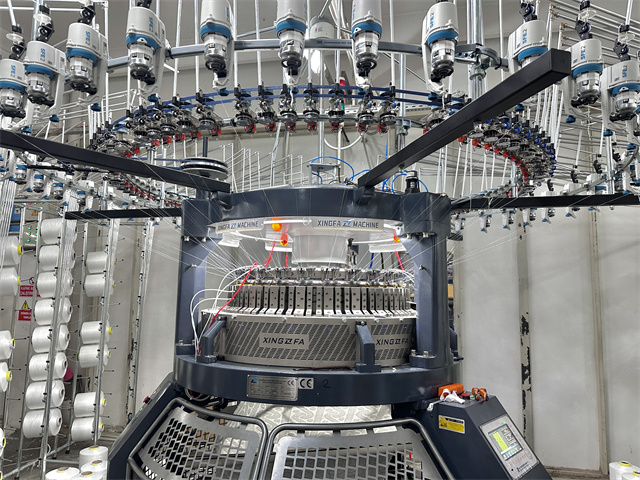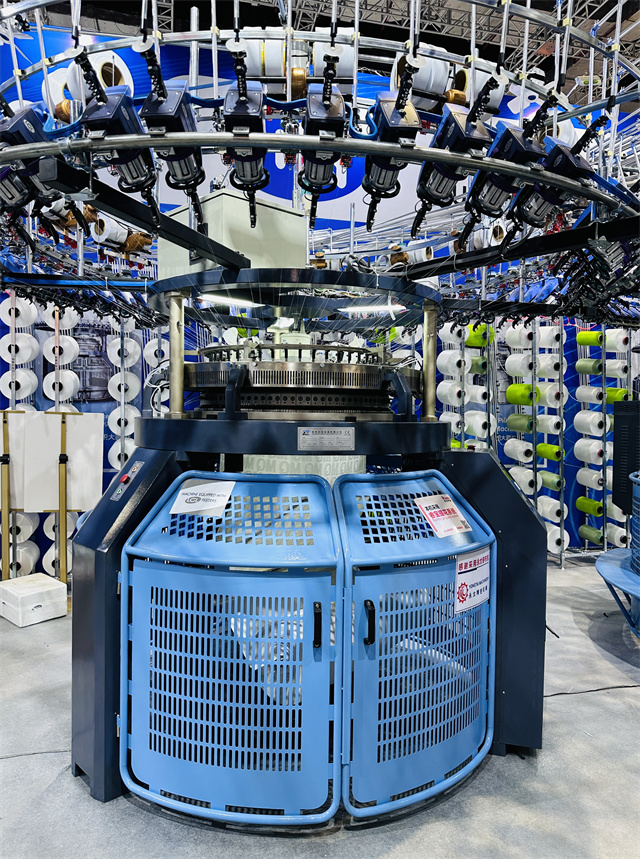Author:Xingfa Knitting MachineFROM:Circular Knitting Machine Manufacturer TIME:2024-03-08
The Development History of Knitting Circle Machine
The knitting circle machine, also known as circular knitting machine, has a rich and fascinating development history that dates back to the late 19th century. From its humble beginnings as a hand-operated device to the sophisticated computerized machines of today, the evolution of the knitting circle machine has revolutionized the textile industry and transformed the way we produce knitted fabrics. This article will explore the key milestones in the development of the knitting circle machine, highlighting the technological advancements and innovations that have shaped its trajectory.
The invention of the circular knitting machine is credited to Joseph Adamson and David Clark, who patented the first circular knitting machine in 1847. This early machine was operated by hand and had limited capabilities, but it laid the foundation for future innovations in circular knitting technology. The basic principle of creating knitted fabric in a continuous loop was established, setting the stage for further developments in the years to come.
As demand for knitted fabrics grew, so did the need for increased efficiency in the production process. In the late 19th and early 20th centuries, significant advancements were made in the automation of circular knitting machines. Innovations such as the incorporation of automatic yarn feeding and the development of intricate cam systems enabled the machines to produce fabrics at a faster pace and with greater consistency. These technological improvements marked a turning point in the history of circular knitting, paving the way for mass production of knitted textiles.
The digital revolution in the latter half of the 20th century brought about a paradigm shift in the textile industry, and circular knitting machines were no exception. The introduction of computerized knitting machines equipped with electronic controls and programmable patterns heralded a new era of precision and customization in knitted fabric production. Manufacturers could now create complex designs and intricate patterns with ease, opening up a world of creative possibilities for designers and textile artists.
One of the most significant developments in the history of circular knitting machines was the integration of seamless knitting technology. Traditionally, knitted garments were constructed from multiple panels that were subsequently sewn together, resulting in seams that could be uncomfortable and restrictive. The advent of seamless knitting machines revolutionized the production of garments by allowing for the creation of fully fashioned, seamless knits that offered superior comfort and fit. This breakthrough had a profound impact on the fashion industry and led to the popularization of seamless knitwear.

Over the years, advancements in materials technology have expanded the capabilities of circular knitting machines to encompass a wide range of fibers and yarns. From natural fibers like cotton and wool to synthetic materials such as nylon and polyester, modern knitting circle machines are equipped to handle diverse yarn types and blend combinations. This versatility has empowered designers to explore innovative textile structures and create fabrics that offer enhanced performance and aesthetic appeal.

In response to growing environmental concerns, the textile industry has increasingly turned its focus towards sustainable practices, and circular knitting has been at the forefront of this movement. Innovations in eco-friendly yarns, energy-efficient production methods, and waste-reducing techniques have elevated the sustainability credentials of knitted fabrics. Circular knitting machines have been adapted to accommodate recycled fibers and organic materials, allowing for the creation of environmentally conscious textiles that align with the principles of circular fashion.

As the fourth industrial revolution unfolds, circular knitting machines are undergoing a digital transformation through the integration of Industry 4.0 technologies. Internet of Things (IoT) connectivity, data analytics, and smart manufacturing systems are being implemented to enhance the efficiency, flexibility, and quality control of knitted fabric production. This leap into the era of smart manufacturing is reshaping the capabilities of circular knitting machines and positioning them at the forefront of innovation in the textile industry.
The future of circular knitting machines holds promise for continued advancements in automation, sustainability, and customization. Emerging technologies such as 3D knitting, additive manufacturing, and on-demand production are poised to redefine the landscape of knitted fabric production. With a strong emphasis on digital design tools, material innovation, and circular economy principles, the knitting circle machine is set to play a pivotal role in shaping the future of textile manufacturing.
In conclusion, the development history of the knitting circle machine is a testament to human ingenuity and technological progress. From its inception as a manual device to its evolution into a sophisticated, digitally integrated system, the circular knitting machine has continuously pushed the boundaries of textile production. As we look to the future, the ongoing pursuit of innovation and sustainability in circular knitting technology promises to elevate the art and science of creating knitted fabrics, ensuring its enduring relevance in the global fashion and textile industry.
```

 Tel: +86-18606960861
Tel: +86-18606960861
 Email:
Email:
 MP/WhatsApp: +86-18606960861
MP/WhatsApp: +86-18606960861
 Manufacturer Address:B26-1 Taiwanese high-tech industrial base, Luoyang town , Quanzhou city, Fujian PRO. China.
Manufacturer Address:B26-1 Taiwanese high-tech industrial base, Luoyang town , Quanzhou city, Fujian PRO. China.